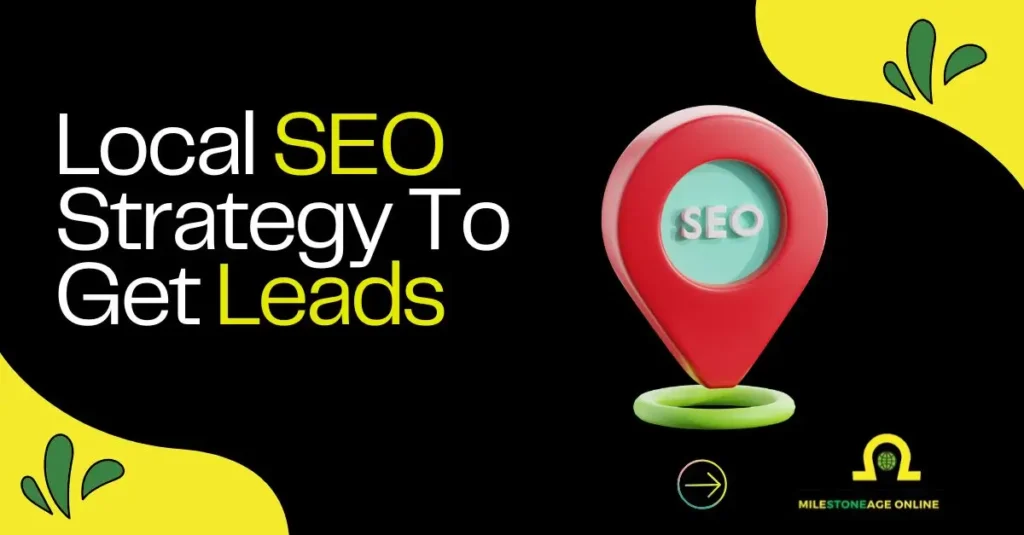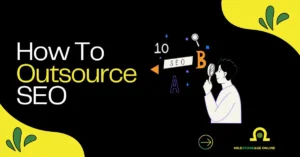Local SEO Strategy means making your business visible when nearby customers search. A Toronto café might rank for “best latte near me”, while a London plumber appears in the Google Map Pack. Key steps include optimizing your Google Business Profile, keeping NAP details consistent, earning reviews, creating local content, and building links. Data shows 76% of “near me” searches lead to a visit within a day, and 28% lead to a purchase. Success comes from relevance, proximity, and social proof—presented with structured data, clear headings, and AI-friendly summaries.
Imagine a small bakery in Boston. One day it shows up first on Google Maps. Within a week, two hundred more people walk in. That is the power of Local SEO. It means showing up when people nearby search for what you sell.
Whether it’s a Toronto café or a London plumber, visibility drives real customers. Local SEO works by using tools like Google Business Profile, accurate Name-Address-Phone details, and smart local keywords.
Data proves its impact—76% of “near me” searches lead to visits, and 28% lead to sales. Without it, you’re invisible.
1. Own Your Spot on the Map – Google Business Profile Mastery
Your Google Business Profile is the front door to local search. Small updates here can bring real customers to you.
Claim It, Clean It, Consistently Update It
Your profile is the first thing people see when they search nearby. To win attention, you must keep it correct and active.
- Claim and verify your profile: Without this, your listing cannot rank high.
- Keep details accurate: Name, address, phone, and hours must stay the same everywhere.
- Use smart words: Add terms like near me, local, or open now in descriptions.
- Stay active: Update weekly with new posts, offers, or events.
In Manchester, a dentist shared short dental tips every week. Within months, bookings rose by 15% because Google saw the profile as fresh and reliable.
Why Photos, Posts & Q&A Are Your Secret Sauce
People trust what they can see. Photos, posts, and answered questions help them choose you.
- Add quality photos: Show your interior, team, and services with clear images.
- Use posts for updates: Share holiday offers in the UK, patio events in Toronto, or seasonal menus in the US.
- Answer every question: Customers use Q&A to check trust, and Google reads these signals too.
- Build trust with reviews: Listings with more photos and replies rank higher in the map pack.
A busy café in Toronto posted new patio pictures during summer. Those photos alone drew new visitors searching “best patios near me.”
2. Speak Locally: Keyword Research That Connects Neighbors
Keywords make your content sound real and local. The right terms help you appear when people are ready to buy.
SERP Scanning So You Sound Like the Locals
Look at search results to learn how people ask. This shows you what matters in their words.
- Type real queries: Search “dentist London” or “plumber Toronto.”
- Watch “People also ask”: These reveal long-tail questions.
- Check related searches: Find hidden phrases at the bottom of Google.
- Spot intent: Some searches ask for fast service, others for price.
A locksmith in London noticed “24-hour emergency locksmith London” showing up often. He added a service page for it, and calls grew quickly.
Tools for Local Keyword Gold
Good tools make this step faster. They show which words your rivals already rank for.
- Run competitor analysis: Tools reveal local keywords that bring traffic to others.
- Add modifiers: Use words like near me, in [city], or open now.
- Check rank positions: Find gaps where you can take the spot.
- Test search intent: Pick words that signal buying rather than just browsing.
A pet groomer in Chicago learned that “mobile pet groomer near me” ranked second. After adding it, they moved up and booked more home visits.
3. NAP, Citations & Schema: The Local SEO Building Blocks
Small errors in your details can confuse both people and Google. Fixing them helps you rank better and be trusted.
Consistency Is King: NAP Across the Web
Your Name, Address, and Phone are the backbone of local SEO. If they are mixed up, you lose trust.
- Match across platforms: Keep the same details on your website, Google, Yelp, and directories.
- Check local listings: Use Yellow Pages, Yelp UK, and Canada 411.
- Update old entries: Make sure older profiles don’t carry wrong numbers or addresses.
- Audit often: Run checks every few months to keep everything correct.
A florist in Toronto fixed mismatched numbers across ten directories. Within weeks, map visibility grew by 10% and more calls started coming in.
Mark It Up—Schema Helps AI & Search Alike
Schema makes your content easier for Google and AI systems to read. It adds context to your details.
- Use LocalBusiness schema: Add opening hours, address, reviews, and price range.
- Highlight events: Mark seasonal sales or local events in structured data.
- Help AI overviews: Summaries and featured snippets pull from this information.
- Keep it updated: Refresh whenever business hours or services change.
A café in Vancouver added schema for menus and opening times. Soon after, Google pulled their details into a quick answer box.
4. Reviews & Reputation: Earn Trust, Rank Higher
Good reviews bring trust. Trust brings better rankings and more customers.
Reviews are not just stars on a screen. They influence how people choose and how search engines rank your business. Both volume and quality matter. A business with consistent five-star reviews is seen as reliable and active.
- Ask for reviews: Request them on Google Business Profile, Yelp, and Trustpilot in the UK.
- Reply to all feedback: Show care by thanking customers for kind words.
- Handle negatives well: Respond with empathy and offer a real fix.
- Build steady flow: New reviews each month signal you are active.
In Calgary, a salon once got a two-star review. Instead of ignoring it, they reached out, fixed the issue, and replied kindly. The customer later updated their rating, and the salon’s overall score improved by half a star. Bookings rose because new visitors saw honesty and care.
5. Content Your Community Craves
Good content connects you with real people in your town. It builds trust and traffic.
Local Stories & Guides = Engagement + SEO
People love reading about their own cities. Local guides and stories work as search magnets.
- Write city guides: Share “Top 5 hidden parks near Seattle” or “Toronto holiday market guide.”
- Cover local events: Post about fairs, parades, or seasonal markets.
- Answer local needs: Create posts on services people search in your area.
- Boost time on site: Localized content keeps readers longer and increases shares.
Publishing posts like these grows both visibility and community loyalty.
Promote & Collaborate Locally
Content spreads faster when shared in community spaces. Working with nearby businesses also helps you reach more people.
- Share in groups: Post in local Facebook groups or Nextdoor in the US.
- Join forums: Engage in community boards in the UK and Canada.
- Co-create guides: Partner with local stores for event-based content.
- Link each other: Cross-links give both sides more reach.
A florist in London teamed with a café for a Valentine’s event guide. Both businesses gained backlinks, more web visits, and more walk-ins.
6. Local Links: Be Known by Your Neighbors
Links show that your business is trusted in your own area. Strong links can move you higher in search.
Find Local Link Opportunities
Community involvement creates natural link chances. These links tell Google that local groups support you.
- Sponsor events: Support local sports or charity events for recognition.
- Write guest posts: Contribute to neighborhood blogs or online magazines.
- Join directories: List in chambers of commerce and trusted directories.
- Offer discounts: Special deals for groups often get mentioned online.
A dentist in the US sponsored a Little League team. The team’s site linked back, creating a local citation that boosted search presence.
Create Link-Worthy Resources
Unique content can attract natural links from community sites and blogs.
- Build resource pages: Share lists like “Best pumpkin patches in Surrey, BC.”
- Create visuals: Infographics about local habits or trends attract shares.
- Feature voices: Quote local influencers or business owners in your guides.
- Keep it current: Update resources yearly to stay relevant.
A UK coffee shop mapped coffee consumption by region. The infographic spread across blogs, creating multiple backlinks in weeks.
7. Track, Tweak, Triumph: Measure What Matters
You cannot improve what you do not measure. Tracking shows what works and what does not.
- Use analytics tools: Track visits and calls through Google Analytics and Search Console.
- Check local ranking: Tools like Semrush show map pack visibility.
- Watch reviews: Track volume and quality over time.
- Follow click-throughs: See how many people tap your profile or website.
A heating company in the US tracked weekly results after fixing their Google Business Profile. Calls rose by 20% within a month. They kept adjusting based on seasonal needs, like adding Christmas offers in the UK or snow services in Canada.
8. Future-Ready Local SEO: AI Overviews & LLM Signals
Search is changing fast. AI overviews now appear above local map results. Businesses that prepare today will own tomorrow’s clicks.
These AI-driven summaries pull content directly from sites and profiles. They favor businesses that write in clear, structured, and concise formats. Instead of long paragraphs, they select short answers that read well on screen. This shift means your local SEO must also work for large language models, not just search engines.
- Write short summaries: Add sections under 50 words that explain your service.
- Use clear bullets: Lists get extracted easily by AI systems.
- Add structured headings: Combine local keywords with headings for quick scanning.
- Keep data fresh: AI favors up-to-date posts and details.
For example, a bakery in New York City added a small section called “In a Nutshell” with key points. Google’s AI pulled those bullets into its overview, placing the bakery at the very top of the results. That single change brought new walk-in customers and increased catering orders.
The future of local search is a mix of AI and traditional ranking signals. Businesses that publish in both human-friendly and machine-friendly formats will win attention first.
9. Local SEO Tools That Make the Job Easier
The right tools save time and improve results. They help you track rankings, check details, and find new opportunities for growth.
- Google Business Profile Manager: Free tool to claim, update, and manage your profile.
- BrightLocal: Tracks local rankings, monitors citations, and gathers reviews in one place.
- Semrush: Finds local keyword gaps, competitor data, and backlink opportunities.
- Moz Local: Syncs your NAP details across directories to keep them consistent.
- Whitespark: Helps build local citations and discover link opportunities.
- Google Analytics & Search Console: Show how people find you and what drives clicks.
Using these tools makes Local SEO more manageable. They give clear data, show quick wins, and help businesses in the USA, UK, and Canada stay ahead.
What’s a GBP vs Local Pack?
Google Business Profile is the listing you control. The Local Pack is the group of three businesses that show up in map results.
How many reviews needed to rank?
There is no fixed number. However, having more than 20 quality reviews often builds trust and helps improve relevance in search.
Should I use “near me” on my site?
Yes, but only in natural ways. It works best in titles like “Pizza delivery near me – Manchester” and in your GBP description.
How often should I update GBP content?
Weekly is best. Google prefers active profiles that share new posts, photos, and updates.
Key Takeaways
- Local SEO = Visibility: It ensures your business shows up where customers are searching nearby.
- Core actions:
- Update your Google Business Profile.
- Keep NAP details consistent.
- Collect and reply to reviews.
- Publish local content.
- Build strong local links.
- Result: These steps drive real visits and sales from local searches.
- Three keys: Proximity, relevance, and prominence guide local rankings.
- Best practice: Stay accurate, stay active, and stay connected with your community.
- Impact: Businesses in the USA, UK, and Canada that follow this strategy see steady growth.
- Final thought: Done right, your brand becomes more than a result—it becomes part of the neighborhood story.






